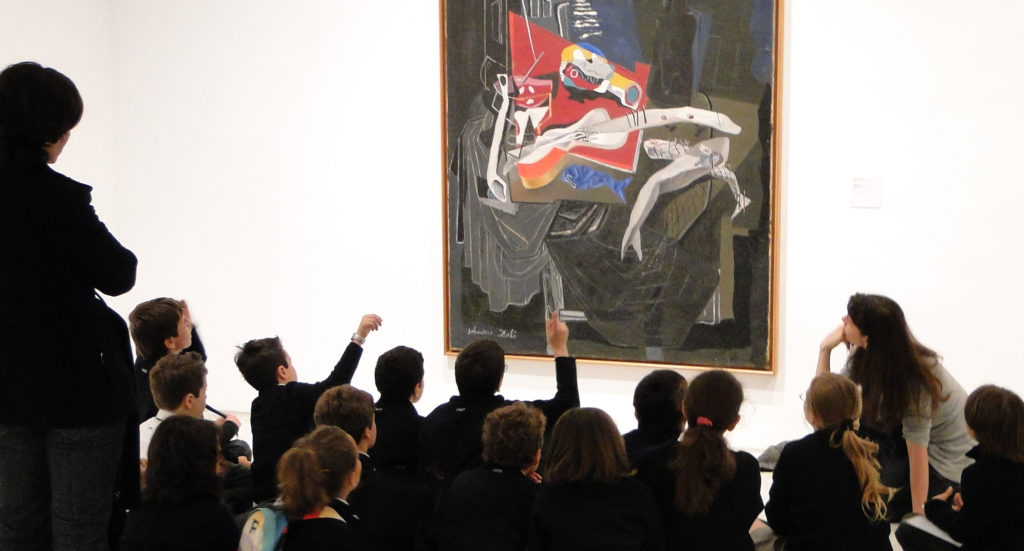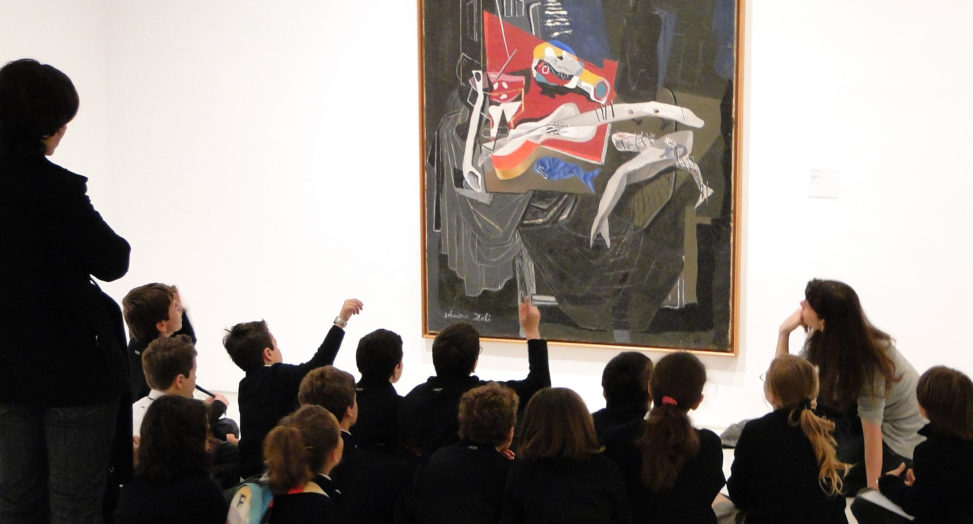The broadening adoption of user experience (UX) practices into public art museum operations is helping to develop visitor experiences from a human-centered perspective. Closely related learner experience design (LX) methodologies can extend such care to exhibition space, where museums can address visitors as learners through the facilitation of viewer meaning-making.

Visitors-as-learners at the Museo Reina Sofia.
Our public art institutions have a responsibility to the public, and part of that responsibility is to educate and be accessible to it. Many new practices have been adopted to better satisfy these responsibilities, to include a notable movement towards visitor-centered design through user experience (UX) practices. However, the research-based UX methodologies implemented are largely relegated to visitor and online services, rarely extending to exhibition design and exhibition design models — the places in which the experience of art museum content is designed.
The public art institution is meant to not only house and present art, but also to facilitate meaning-making and relationships between this art and the public viewer. Learner experience design (LX), which bears great similarity to UX, addresses and focuses on designing for the meaning-making process from a learner-centered perspective. This presentation explores the relationship between UX and LX, compares the popular constructivist and discovery models of exhibition design in the framework of constructivist learning theory, and speculates on how these methodologies and models inform the art museum of the future.
[Powerpoint] (Too large to upload)
